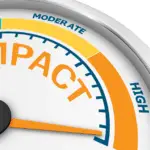Benjamin Bloom was an American educational psychologist. In 1956 his research became known as Bloom’s Taxonomy of Learning or Bloom’s Taxonomy. Bloom’s Taxonomy categorizes three domains of learning into hierarchies. These three domains are cognitive, affective, and psychomotor.
Bloom’s Cognitive Domain
The cognitive domain deals with thinking and intellect. There are six levels in the cognitive domain. The levels of Bloom’s Cognitive Domain are knowledge, comprehension, application, analysis, synthesis, and evaluation. In later years, evaluation was renamed “create.”

Bloom’s Affective Domain
The affective domain categorizes the ways in which we handle all things related to emotions, such as feelings, attitudes, and values. This domain is more important when dealing with learning programs around social changes. If you’ve ever attended a course on DEI or leadership development, you were working at least somewhat in the affective domain. The levels of Bloom’s Affective Domain are receiving, responding, valuing, organizing, and characterizing.

Bloom’s Psychomotor Domain
The psychomotor domain of Bloom’s Taxonomy refers to the ability to master a physical task. It includes movement, coordination, and use of the motor- skill areas. A great example of when we all enter this domain is when we get a new car. We have to engage our minds to find and use knobs, buttons, and levers that are in unfamiliar locations. Later, this domain was further mapped out and edited by several different researchers, which means there are now many versions available. The original levels were imitation, manipulation, precision, articulation, and naturalization.

Putting it all together
So how do Instructional Designers use the taxonomy?
Identify Learning Objectives: You can create clear and measurable learning objectives by consulting Bloom’s taxonomy. Here’s an example:
My stakeholder wants the learners to understand how to tell time using an Analog Clock. Without using the taxonomy, I might create a learning objective around knowledge. But when I check the cognitive domain, I see that my stakeholder’s request falls in the Application category of Bloom’s Taxonomy. I’d create my learning objective using the action verbs for that level:
Learners will be able to demonstrate telling time using an analog clock.
Sequence Content: You can order the content starting with the lower levels of the taxonomy coming first with the higher levels at the end. In our example:
Before learners can tell time, they must learn about the different indicators on the clock. I might have several objectives from the knowledge and understand levels of the domain, such as:
Learners will label the hour and minute hands on the analog clock. (knowledge level)
Learners will describe the function of the hour hand. (understand level)
These are just two examples from this lesson, but the level on the domain determines the order in the course.
Select Instructional Techniques: Here’s where it gets fun. You can use the domain level to help you determine how to present and reinforce the content. For example, you might use a case study on content that is on the analyze or evaluate level, but not on the lower levels. Lower levels are simpler techniques like flash cards or click to reveal.
Develop Assessments: The action verb you selected for your learning objective should give you a very clear way to determine how to test an objective. There should be a minimum of one assessment item for each learning objective. In many places I’ve worked, we labeled each assessment question with the number of the learning objective to make reporting easier. Example:
The objective was: Learners will label the hour and minute hands on the analog clock.
The test could be: Learner is presented with an analog clock with only one of the two hands and must select the label for which hand is shown.
Whether using an AI tool or manual creation, learning objectives need clear and measurable objectives. Bloom’s taxonomy can serve as a checklist and help you ask the right questions that will validate that your objectives are strong and focused on the knowledge, skills, or attitudes you want the participants to learn. Incorporating Bloom’s Taxonomy into your design will result in courses that are sequenced well, have solid assessment questions, and have appropriate learning objectives.
Do you need to find instructional designers skilled in designing courses using Bloom’s Taxonomy? Our industry-expert Relationship Managers can help! If you have more projects than people, we can provide you with the right instructional designer to start your project with confidence!
- 5shares
- LinkedIn1
- Twitter0
- Facebook0
- Love This4











